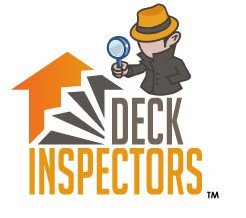How SB 721 is Making California Buildings Safer: A Look at Early Success Stories
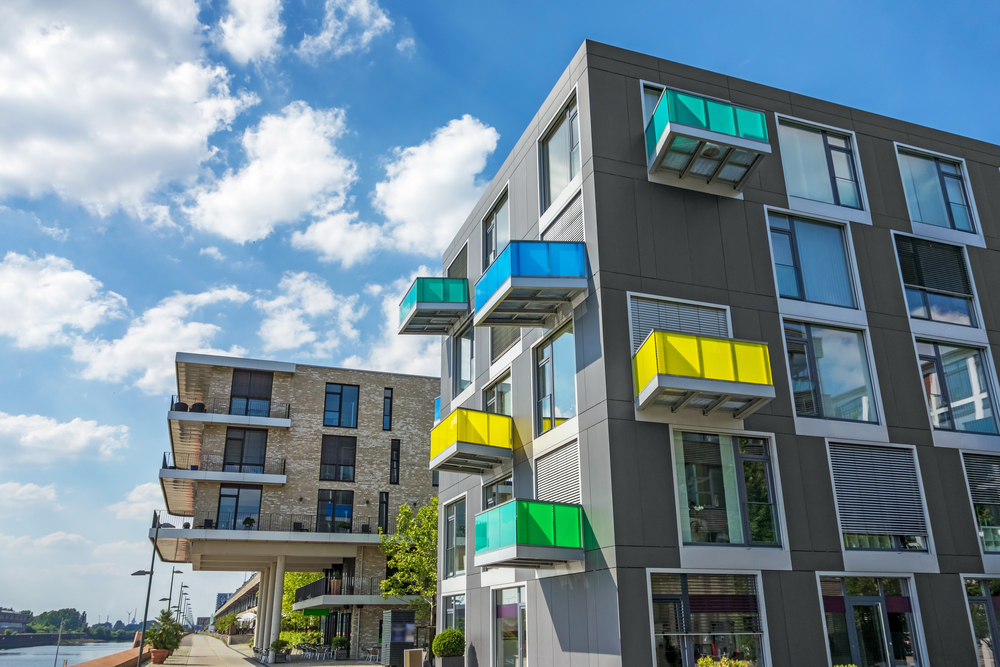
Since its enactment, SB 721 has played a crucial role in enhancing the safety and structural integrity of multifamily residential buildings across California. Designed to prevent tragic accidents caused by failing balconies, decks, and other exterior elevated elements (EEEs), SB 721 mandates regular inspections and necessary repairs — ultimately saving lives. Let’s explore how this law is already positively impacting through real-life success stories. Preventing Potential Tragedies with SB 721 One striking example comes from a multifamily apartment complex in Southern California. During a routine SB 721 inspection, licensed inspectors discovered severe wood rot and water damage in multiple balcony support beams — invisible issues from the surface. These compromised structures posed a significant risk of collapse. Thanks to the early detection prompted by SB 721, property owners could carry out immediate repairs, reinforcing the balconies and ensuring tenant safety. The damage could have gone unnoticed without this mandated inspection until it was too late. In another case, an inspection at a mid-sized apartment building revealed corroded fasteners securing a deck railing. While the damage seemed minor at first glance, further examination showed the corrosion was extensive enough to cause the railing to give way under pressure. This alarming find replaced the deck’s hardware altogether, preventing what could have been a catastrophic accident. Strengthening Structural Integrity and Boosting Confidence Beyond preventing accidents, SB 721 inspections are helping property owners and residents feel more secure about their living spaces. A condominium complex in Los Angeles underwent its first round of inspections, uncovering a few minor structural issues that were quickly addressed. The result? Residents expressed relief knowing their building was safe and the property management team was proactive about their well-being. Compliance with SB 721 reduces liability risks and adds value to property owners’ investments. Well-maintained buildings are also more attractive to potential renters and buyers, reinforcing the long-term benefits of these safety measures. The Ongoing Impact of SB 721 The early success stories of SB 721 highlight the law’s importance in protecting lives and property. As more inspections take place across California, the number of potential accidents prevented will only grow, further solidifying the role of proactive maintenance and regular structural evaluations. If you’re a property owner or manager, ensuring compliance with SB 721 is about more than following the law; it’s about creating a safer environment for everyone. Don’t wait for warning signs; schedule your inspection today and take a proactive step toward building safety. Deck Inspectors for Southern California is happy to offer our services in Los Angeles County, Riverside County, Orange County as well as San Diego County and all Southern California surrounding areas like: Los Angeles, Irvine, Long Beach, La Jolla, Glendale, Pasadena, Santa Ana, Huntington Beach, Dana Point, Burbank, Santa Monica, Anaheim, Temecula, Encinitas, Chula Vista, Vista, Mesa, San Diego, Oceanside, Escondido, Carlsbad, Poway, Mission Viejo, and El Cajon.
How Professional Deck Inspectors Prevent Costly Structural Failures

When it comes to maintaining the safety and value of your property, professional Deck Inspectors play a critical role. In Southern California, where decks, balconies, and other exterior elevated elements (EEEs) face constant exposure to the elements, routine inspections are essential for preventing structural failures that can result in devastating accidents and expensive repairs. Let’s dive into how certified deck inspectors help protect both your property and its occupants. Deck Inspectors & Early Detection of Hidden Deterioration One of the key ways Deck Inspectors prevent costly structural failures is by identifying early signs of damage that may not be visible to the untrained eye. While property owners might notice obvious issues like loose boards or rusty railings, inspectors are trained to spot more subtle forms of deterioration, such as: Wood Rot and Decay Often hidden beneath layers of paint or sealant, wood rot weakens the structural integrity of decks, increasing the risk of collapse. Water Intrusion Inspectors check for improper drainage or waterproofing, which can cause long-term damage to support beams and fasteners. Corrosion of Metal Components Railings, bolts, and connectors can corrode over time, compromising the deck’s overall stability. By catching these issues early, Deck Inspectors help property owners address minor problems before they escalate into dangerous — and expensive — structural failures. Deck Inspectors & Ensuring Compliance with Safety Regulations Laws like SB 721 and SB 326 in California mandate regular inspections of exterior elevated elements for multifamily residential buildings. Professional Deck Inspectors ensure your property remains compliant by: Conducting thorough, regulation-specific inspections Documenting findings with detailed reports Advising on necessary repairs or reinforcements to meet legal standards Compliance safeguards residents and protects property owners from potential lawsuits and penalties. Working with professionals means you can confidently navigate these regulations, keeping your building safe and up to code. Protect Your Property with Proactive Inspections Structural failures don’t happen overnight — they result from months or even years of unnoticed damage. That’s why partnering with professional Deck Inspectors for routine evaluations is an innovative, proactive approach. Whether you manage an apartment complex, condominium, or commercial property, regular inspections can save you from costly emergency repairs and protect the well-being of those who use your decks and balconies daily. Ready to safeguard your property? Contact our team of certified Deck Inspectors today to schedule your next inspection and stay one step ahead of structural failures. Deck Inspectors for Southern California is happy to offer our services in Los Angeles County, Riverside County, Orange County as well as San Diego County and all Southern California surrounding areas like: Los Angeles, Irvine, Long Beach, La Jolla, Glendale, Pasadena, Santa Ana, Huntington Beach, Dana Point, Burbank, Santa Monica, Anaheim, Temecula, Encinitas, Chula Vista, Vista, Mesa, San Diego, Oceanside, Escondido, Carlsbad, Poway, Mission Viejo, and El Cajon.
How to Choose a Qualified Inspector for SB 326 Compliance

As a property owner or manager in Southern California, complying with SB 326 is not just a legal obligation — it’s a crucial step in ensuring your multifamily residential buildings’ safety and structural integrity. Finding the right inspector to conduct these mandatory deck inspections can feel overwhelming, but choosing a qualified professional is essential to meeting regulatory requirements and protecting your property and residents. Let’s explain what to look for when selecting an SB 326 inspector. Key Qualifications to Consider Proper Licensing and Credentials SB 326 mandates that inspections must be performed by a licensed architect, civil engineer, structural engineer, or certified building inspector. Ensure that any professional you consider has the appropriate license or certification recognized by the state of California. Ask for their license number and verify it through the California Architects Board or Board for Professional Engineers. Relevant Experience Not all building inspectors are created equal. Choosing someone with direct experience inspecting elevated exterior elements like balconies, decks, stairways, and walkways is essential. An inspector familiar with the specific requirements of SB 326 will know how to identify early signs of water damage, wood rot, or structural weaknesses. Knowledge of SB 326 Regulations Your inspector should have a thorough understanding of the law itself. Likewise, they need to know the timeline for compliance, what areas of the property must be inspected, and how to document their findings correctly. Ask potential inspectors how they stay updated on California building codes and SB 326 amendments. Questions to Ask Your Potential SB 326 Inspector Before hiring an inspector, consider asking these questions: How many SB 326 inspections have you conducted? Can you provide references from other multifamily property owners? What is your process for documenting and reporting inspection findings? How do you handle follow-up actions if damage or safety concerns are discovered? Are you insured and bonded? A qualified inspector should be able to answer these confidently and provide proof of their experience and credentials. Protect Your Property with the Right SB 326 Inspector Choosing the right inspector is a critical step in ensuring SB 326 compliance. A certified, experienced professional will help you meet the legal requirements and provide peace of mind that your property is safe for residents. Remember to check for proper licensing, relevant experience with elevated exterior elements, and a deep understanding of regulations. So, do you need help navigating the inspection process? Our team of licensed professionals specializes in deck and balcony inspections across Southern California. Contact us today to schedule a consultation and ensure your property remains compliant and secure. Deck Inspectors for Southern California is happy to offer our services in Los Angeles County, Riverside County, Orange County as well as San Diego County and all Southern California surrounding areas like: Los Angeles, Irvine, Long Beach, La Jolla, Glendale, Pasadena, Santa Ana, Huntington Beach, Dana Point, Burbank, Santa Monica, Anaheim, Temecula, Encinitas, Chula Vista, Vista, Mesa, San Diego, Oceanside, Escondido, Carlsbad, Poway, Mission Viejo, and El Cajon.
The Cost of Non-Compliance: Fines and Penalties under SB 326
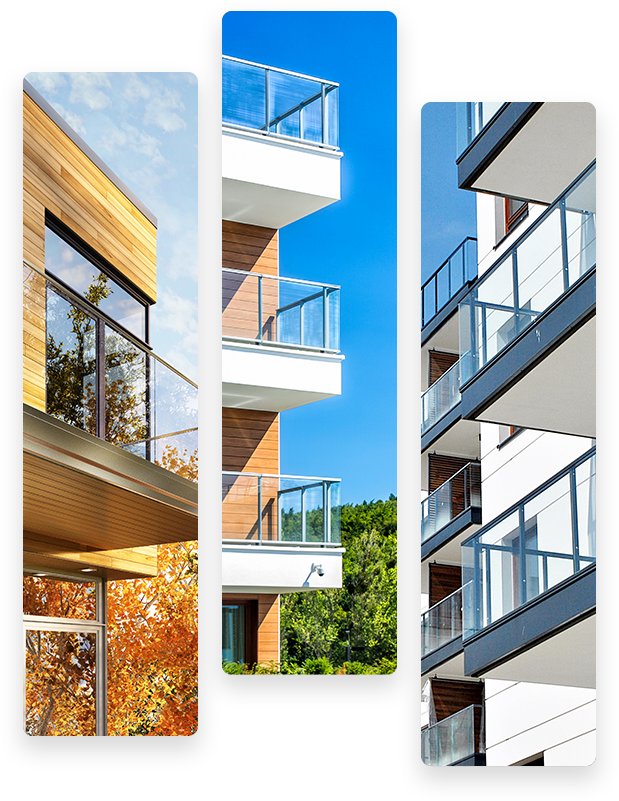
In California, multifamily building owners must adhere to stringent inspection regulations outlined in SB 326 Inspections. This law mandates regular evaluations of exterior elevated elements, such as balconies and decks, to prevent structural failures. Non-compliance can result in severe financial and legal repercussions. Understanding these consequences underscores the importance of timely and thorough compliance. Financial Penalties for Non-Compliance Failure to meet inspection deadlines or ignore required repairs can result in significant fines. Local jurisdictions can impose penalties on non-compliant property owners, which can quickly accumulate. In addition to direct fines, owners may face costly emergency repairs or increased insurance premiums due to higher liability risks. Moreover, delays in addressing structural concerns can lead to even steeper financial burdens. Property owners may be held responsible for medical expenses, lawsuits, and potential settlements if a deck or balcony collapses due to negligence. These financial repercussions can far exceed the initial cost of complying with SB 326 Inspections. Legal Consequences of Ignoring SB 326 Beyond financial penalties, non-compliance with SB 326 can expose property owners to legal risks. If an accident occurs due to a failure to comply with inspection mandates, owners could face lawsuits for negligence. In severe cases, non-compliance may result in criminal liability, particularly if it leads to injury or loss of life. Additionally, city officials can enforce compliance through legal action, including mandatory repair orders or property liens. These legal complications affect an owner’s finances and the property’s reputation and value. Owners proactively adhering to SB 326 Inspections can avoid these risks and maintain legal standing and tenant safety. Conclusion The financial and legal consequences of failing to comply with SB 326 Inspections make it clear that adherence to these regulations is not optional. Property owners who delay or ignore required inspections and repairs risk heavy fines, legal challenges, and potential property devaluation. By staying compliant, owners can protect their investments, avoid unnecessary costs, and ensure the safety of residents. Prioritizing proactive inspections and maintenance is the best strategy for mitigating risks and ensuring long-term structural integrity. Click here to get in contact with an expert from Deck Inspectors today! Deck Inspectors for Southern California is happy to offer our services in Los Angeles County, Riverside County, Orange County as well as San Diego County and all Southern California surrounding areas like: Los Angeles, Irvine, Long Beach, La Jolla, Glendale, Pasadena, Santa Ana, Huntington Beach, Dana Point, Burbank, Santa Monica, Anaheim, Temecula, Encinitas, Chula Vista, Vista, Mesa, San Diego, Oceanside, Escondido, Carlsbad, Poway, Mission Viejo, and El Cajon.
Choosing the Right Deck Materials for Proper Balcony Construction

Selecting the right materials is crucial for ensuring durability, safety, and longevity in Balcony Construction. With various options available, property owners must weigh the pros and cons of each material to find the best fit for their specific needs. Here’s a breakdown of common decking materials and what to consider. Wood Decking: Traditional and Natural Wood is one of the most popular decking materials due to its classic appearance and natural feel. However, it requires consistent maintenance to prevent damage from weather and pests. Pros: Aesthetic appeal with a warm, natural look Can be stained or painted for customization Readily available and relatively affordable Cons: Requires frequent sealing and waterproofing Prone to rot, warping, and insect infestations Shorter lifespan compared to alternative materials For Balcony Construction in areas with extreme weather conditions, hardwood options like Ipe or Redwood offer better resistance to moisture and UV damage but come at a higher cost. Composite Decking: Low Maintenance and Long-Lasting Composite decking, made from wood fibers and plastic, is a durable and low-maintenance alternative to traditional wood. Pros: Resistant to rot, insects, and warping Minimal maintenance required (no sealing or staining) Available in a variety of colors and textures Cons: Higher upfront cost than wood It can become hot in direct sunlight Less eco-friendly than natural wood options Composite decking is a solid choice for Balcony Construction if you want longevity with minimal upkeep. It is especially effective in humid or coastal environments where moisture resistance is key. Aluminum and PVC Decking: Modern and Weather-Resistant Aluminum and PVC decking materials provide excellent long-term solutions for maximum durability and resistance to environmental factors. Pros: Highly resistant to moisture, rot, and insects Extremely durable with minimal maintenance Non-combustible, making it a safer option Cons: Higher cost compared to wood and composite Limited color and design options It can feel cold underfoot in cooler temperatures Aluminum is ideal for commercial or high-traffic Balcony Construction, while PVC offers a lightweight alternative that resists mold and mildew, making it suitable for regions with heavy rainfall. Conclusion When selecting materials for Balcony Construction, consider climate, maintenance requirements, and budget. Wood provides a classic appeal but requires upkeep, while composite, aluminum, and PVC offer durability and weather resistance with minimal maintenance. By choosing the right decking material, property owners can ensure a long-lasting and safe balcony structure suited to their specific needs. Click here to get in contact with an expert from Deck Inspectors today! Deck Inspectors for Southern California is happy to offer our services in Los Angeles County, Riverside County, Orange County as well as San Diego County and all Southern California surrounding areas like: Los Angeles, Irvine, Long Beach, La Jolla, Glendale, Pasadena, Santa Ana, Huntington Beach, Dana Point, Burbank, Santa Monica, Anaheim, Temecula, Encinitas, Chula Vista, Vista, Mesa, San Diego, Oceanside, Escondido, Carlsbad, Poway, Mission Viejo, and El Cajon.
SB 721 and SB 326: What Happens After the Initial Inspection?
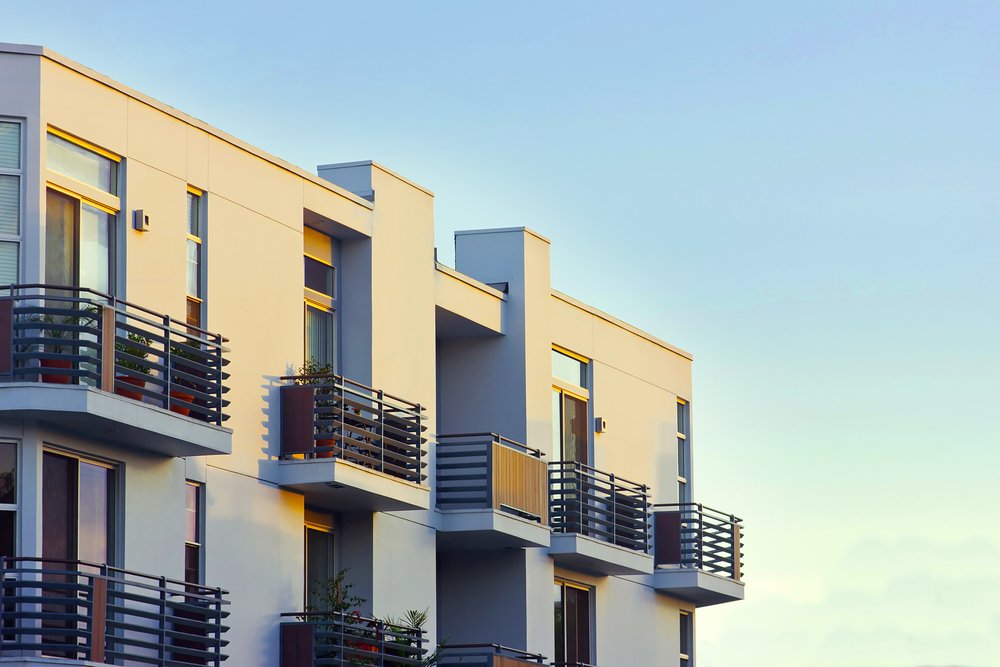
For property owners in California, compliance with SB 721 Inspections and SB 326 is crucial to ensuring the safety and longevity of exterior elevated elements like balconies and decks. While the initial inspection is a significant first step, ongoing compliance requires adherence to re-inspection schedules, timely repairs, and thorough documentation. Here’s what property owners need to know after the initial inspection. Re-Inspection Schedules and Ongoing Compliance Once the initial inspection is complete, property owners must follow a structured re-inspection timeline to remain compliant: SB 721 Inspections (for apartment buildings with three or more units): Re-inspections are required every six years to ensure that balconies, decks, and other elevated exterior elements remain structurally sound. SB 326 (for condominiums and HOAs) requires a licensed architect or structural engineer to conduct re-inspections every nine years to maintain compliance. Scheduling inspections in advance can help property owners avoid last-minute delays and ensure all necessary assessments are completed on time. Repair Timelines and Consequences of Delays If the inspection report identifies structural deficiencies, property owners must address them within strict timelines to avoid penalties: Under SB 721, property owners must complete all necessary repairs within 120 days of receiving the inspection report. Suppose repairs are not completed within this timeframe. In that case, you may receive a 30-day extension under specific circumstances, but failure to comply can result in fines or legal action from local enforcement agencies. While SB 326 does not have a specific deadline, HOAs must develop a repair plan and implement corrective measures as soon as possible. Delaying necessary repairs can lead to liability issues and increased costs. Engaging qualified contractors early can help ensure repairs are completed efficiently and within the required timeframes. Documentation and Record-Keeping for Continued SB 326 & SB 721 Inspections Compliance Maintaining proper records is essential for complying with SB 721 Inspections and SB 326 requirements. Property owners should keep the following documents on file: Copies of all inspection reports, including photographs and detailed findings. Proof of completed repairs, including invoices and contractor certifications. A schedule of upcoming inspections and maintenance plans to stay on track with compliance deadlines. These records should be readily available for review by local authorities or HOA boards when required. Keeping detailed documentation can also benefit legal or insurance matters related to building safety. SB 326 & SB 721 Inspections Conclusion The initial inspection under SB 721 Inspections and SB 326 is just the beginning of an ongoing process to ensure structural integrity and tenant safety. Regular re-inspections, prompt repairs, and meticulous record-keeping are necessary for continued compliance. By staying proactive, property owners can avoid costly penalties, mitigate safety risks, and protect their investments for the long term. Click here to get in contact with an expert from Deck Inspectors today! Deck Inspectors for Southern California is happy to offer our services in Los Angeles County, Riverside County, Orange County as well as San Diego County and all Southern California surrounding areas like: Los Angeles, Irvine, Long Beach, La Jolla, Glendale, Pasadena, Santa Ana, Huntington Beach, Dana Point, Burbank, Santa Monica, Anaheim, Temecula, Encinitas, Chula Vista, Vista, Mesa, San Diego, Oceanside, Escondido, Carlsbad, Poway, Mission Viejo, and El Cajon.
A Timeline for SB 721 and SB 326 Compliance: Key Dates and Milestones
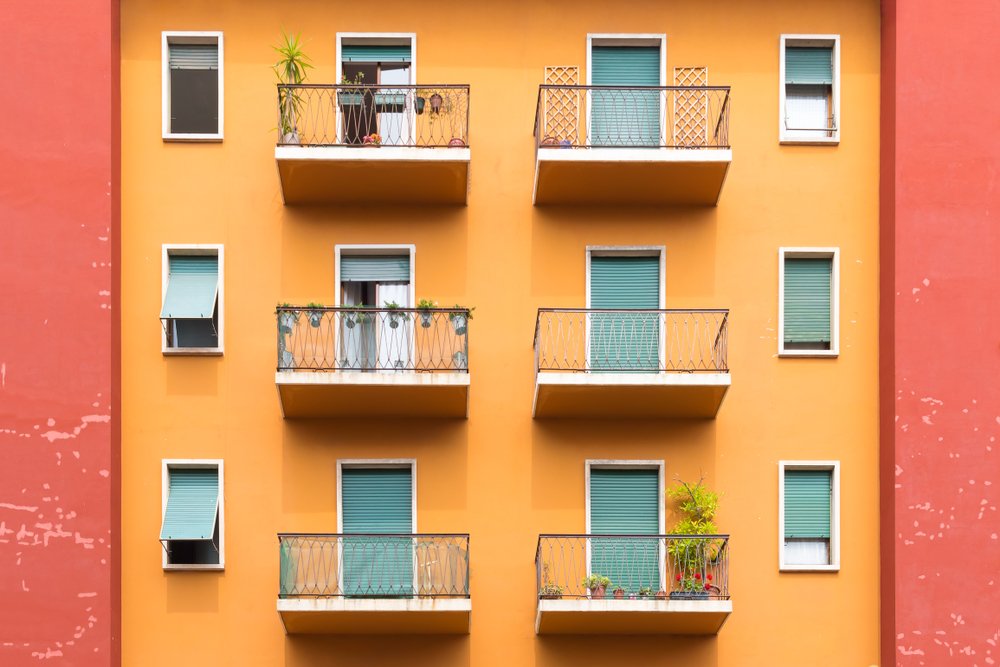
California property owners must comply with SB 721 and SB 326, two critical laws designed to enhance the safety of exterior elevated elements, including balconies, decks, and walkways. Understanding the key deadlines and milestones can help ensure compliance, avoid penalties, and maintain structural integrity. Below is a detailed timeline to guide property owners through the process. Initial Inspection Deadlines SB 721 applies to apartment buildings with three or more units. The initial inspections must happen by January 1, 2025. This requirement ensures that all load-bearing exterior elements are evaluated for safety concerns. SB 326, which applies to condominiums and homeowner associations (HOAs), also requires that the first round of inspections happen by January 1, 2025. Unlike SB 721, SB 326 requires a licensed architect or structural engineer to conduct these inspections. Ongoing Inspection and Re-Inspection Cycles After the initial inspection, both laws require periodic re-inspections: Under SB 721, subsequent inspections must happen every six years after the first assessment. This ensures that ongoing maintenance and repairs are carried out as needed. Under SB 326, re-inspections must happen every nine years to maintain long-term safety for HOA-managed properties. Property owners should establish an inspection schedule well to comply with these requirements. Deadlines for SB 721 & 326 Repairs and Corrections If an inspection identifies structural deficiencies, property owners must act promptly: SB 721 requires that you complete any necessary repairs within 120 days of receiving the inspection report. If repairs are not addressed within this timeframe, local enforcement agencies may impose fines or take further legal action. SB 326: While the law does not specify a strict repair deadline, HOAs must develop and implement a plan to address any safety concerns identified in the inspection report. Property owners and HOA managers must collaborate with professionals to ensure all required repairs are completed on time. SB 721 & SB 326 Conclusion Adhering to the SB 721 and SB 326 timelines is essential for property owners to avoid fines, maintain tenant safety, and uphold property values. Owners can ensure compliance by staying proactive with inspections, repairs, and re-inspections while preventing costly legal and financial repercussions. Planning and working with qualified inspectors will streamline the process and keep properties safe for years. Click here to get in contact with an expert from Deck Inspectors today! Deck Inspectors for Southern California is happy to offer our services in Los Angeles County, Riverside County, Orange County as well as San Diego County and all Southern California surrounding areas like: Los Angeles, Irvine, Long Beach, La Jolla, Glendale, Pasadena, Santa Ana, Huntington Beach, Dana Point, Burbank, Santa Monica, Anaheim, Temecula, Encinitas, Chula Vista, Vista, Mesa, San Diego, Oceanside, Escondido, Carlsbad, Poway, Mission Viejo, and El Cajon.
Wood Deck Waterproofing for Different Climates
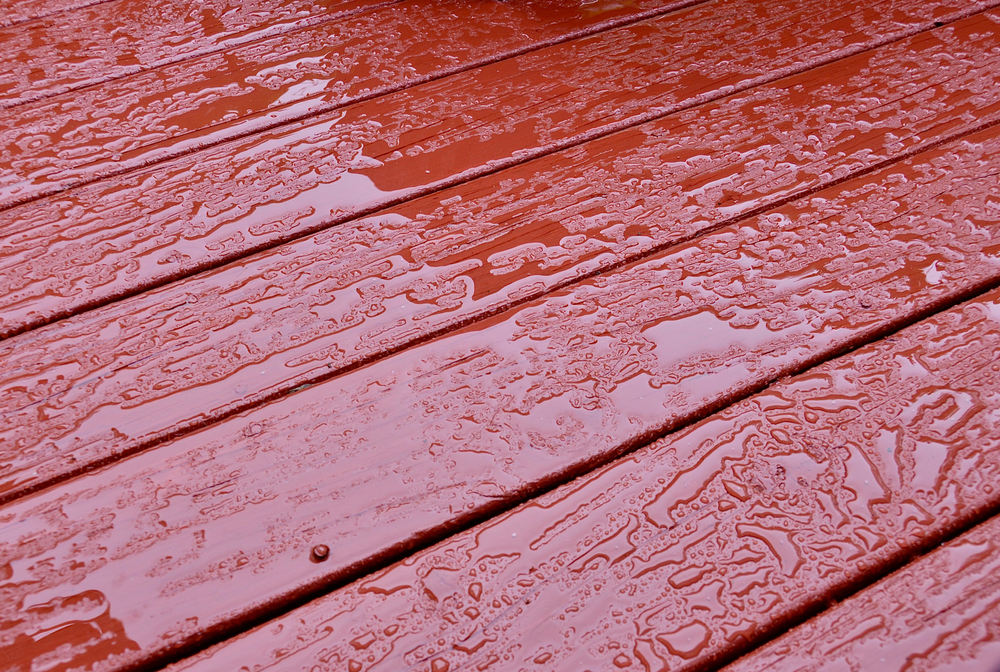
Wood decks are a valuable addition to any property, offering outdoor space for relaxation and entertainment. However, exposure to different climates can lead to deterioration, mold growth, and structural damage without proper Wood Deck Waterproofing. Choosing the right waterproofing products and methods based on regional weather conditions ensures longevity and durability. Waterproofing in Dry and Hot Climates Wood decks face unique challenges in areas with high temperatures and low humidity, such as Southern California and the Southwest. Prolonged exposure to intense sunlight can cause fading, drying, and cracking, creating a brittle and weakened structure. To combat these issues, consider the following waterproofing strategies: UV-Resistant Sealers: Choose a waterproofing product with UV blockers to prevent sun damage and fading. Oil-based finishes penetrate deeply into the wood, helping retain moisture and reducing the cracking risk. Frequent Reapplication: Waterproofing should be reapplied at least once a year to maintain effectiveness in hot and dry climates. Additionally, light-colored stains and finishes can help reflect sunlight, preventing excessive heat absorption and reducing surface temperature. Waterproofing in Humid and Rainy Climates Excess moisture poses a significant threat to wood decks in regions that experience heavy rainfall and high humidity, such as the Pacific Northwest or Gulf Coast. Without proper Wood Deck Waterproofing, decks are susceptible to warping, mold, mildew, and rot. To protect your deck in wet climates, follow these guidelines: Water-Repellent Sealers: Opt for a high-quality, water-repellent sealer that prevents water penetration while allowing the wood to breathe. Elastomeric Coatings: These create a flexible, waterproof barrier that adapts to temperature fluctuations and prevents cracks. Proper Drainage: Ensure your deck has adequate drainage by maintaining gaps between boards and keeping gutters clear. Routine Inspections: Regularly check for signs of moisture damage and address any issues promptly to prevent deterioration. In particularly wet climates, applying multiple layers of waterproofing products and using pressure-treated wood can significantly enhance longevity. Wood Deck Waterproofing Conclusion Effective Wood Deck Waterproofing requires consideration of regional climate conditions to ensure long-term durability. Hot, dry climates demand UV-resistant and moisture-retaining treatments, while humid and rainy environments require water-repellent and flexible coatings. By selecting the right waterproofing products and maintenance routine for your specific climate, you can protect your deck from weather-related damage and extend its lifespan for years. Click here to get in contact with an expert from Deck Inspectors today! Deck Inspectors for Southern California is happy to offer our services in Los Angeles County, Riverside County, Orange County as well as San Diego County and all Southern California surrounding areas like: Los Angeles, Irvine, Long Beach, La Jolla, Glendale, Pasadena, Santa Ana, Huntington Beach, Dana Point, Burbank, Santa Monica, Anaheim, Temecula, Encinitas, Chula Vista, Vista, Mesa, San Diego, Oceanside, Escondido, Carlsbad, Poway, Mission Viejo, and El Cajon.
The Future of Deck Inspections: Will SB 721 and SB 326 Expand to Other States?

In recent years, California has taken significant steps to enhance the safety of elevated exterior structures with the passage of SB 721 and SB 326. These laws establish mandatory inspection requirements for balconies, decks, and other load-bearing components in multifamily residential buildings, aiming to prevent structural failures and ensure public safety. As property owners and legislators nationwide take note of these regulations, many are asking whether similar laws will be adopted in other states. The Growing Focus on Structural Safety Implementing SB 721 and SB 326 in California highlights an increasing awareness of structural safety concerns, particularly in aging buildings. The tragic 2015 balcony collapse in Berkeley, which resulted in multiple fatalities, catalyzed these legislative actions. Lawmakers in other states experiencing similar structural failures due to deferred maintenance and weathering may consider adopting identical inspection mandates. States with high-density urban housing, extreme weather conditions, or a history of structural failures are the most likely candidates for expanding such regulations. For example, states along the East Coast, where hurricanes and heavy snowfall contribute to accelerated structural wear, may find it prudent to implement proactive inspection laws. Similarly, areas with significant multifamily housing developments, such as Texas, Florida, and New York, may recognize the benefits of mandatory deck inspections to prevent potential disasters. What Property Owners Outside of California Should Know As the trend toward stricter building safety regulations grows, property owners in other states should take proactive steps to ensure their decks and balconies comply with best practices, even if formal legislation has not yet been enacted. Regular inspections by licensed professionals can help identify structural weaknesses before they become hazardous. Implementing routine maintenance schedules and documenting repairs can prepare property owners for future regulatory changes. Additionally, property managers should stay informed about any evolving discussions at the legislative level regarding structural safety laws. While SB 326 and SB 721 apply only to California, other jurisdictions may adopt similar measures in the coming years. Being ahead of the curve in compliance and safety can help avoid costly emergency repairs or legal liabilities. SB 326 & SB 721 Conclusion California’s SB 326 and SB 721 set new precedents in deck inspections and multifamily housing safety. As the movement toward increased structural oversight continues, other states may follow suit with their versions of these laws. Property owners outside of California should recognize the importance of proactive maintenance and inspections to ensure safety and prepare for potential regulatory changes. By staying informed and implementing best practices, they can protect their investments and the well-being of their tenants and residents. Click here to get in contact with an expert from Deck Inspectors today! Deck Inspectors for Southern California is happy to offer our services in Los Angeles County, Riverside County, Orange County as well as San Diego County and all Southern California surrounding areas like: Los Angeles, Irvine, Long Beach, La Jolla, Glendale, Pasadena, Santa Ana, Huntington Beach, Dana Point, Burbank, Santa Monica, Anaheim, Temecula, Encinitas, Chula Vista, Vista, Mesa, San Diego, Oceanside, Escondido, Carlsbad, Poway, Mission Viejo, and El Cajon.
The Importance of Deck Inspection Services

Decks are valuable assets for homes and multifamily properties. They offer functional outdoor space and add to a property’s aesthetic appeal. However, like any structural feature, decks are subject to wear and tear caused by weather, aging materials, and everyday use. Regular inspections ensure their safety, longevity, and compliance with local regulations. For property owners in Southern California, where environmental factors like intense sunlight, coastal humidity, and occasional heavy rainfall can take a toll, professional deck inspection services are essential. This article explores why deck inspections matter and how they help protect your investment. Ensuring Safety and Preventing Accidents with Deck Inspection Services The primary purpose of deck inspection services is to ensure the safety of those who use these elevated structures. Over time, wood framing can deteriorate, fasteners may corrode, and load-bearing components might weaken. These issues can go unnoticed without regular inspections, leading to potentially catastrophic accidents. Key safety concerns in deck inspection services include: Structural Damage: Rotting wood, cracks, or rusted hardware can compromise a deck’s load-bearing capacity. Water Intrusion: Moisture infiltration can lead to hidden damage, such as mold or dry rot, further weakening the structure. Code Violations: Aging decks may no longer meet modern building codes, posing safety and legal risks. Professional inspectors are trained to identify these risks and provide actionable recommendations. This proactive approach helps prevent injuries and reduces property owners’ liability. Extending the Life of Your Deck with Deck Inspection Services Decks represent a significant investment, and regular maintenance is key to maximizing their lifespan. Professional deck inspection services can detect minor problems before they escalate into costly repairs or full replacements. Benefits of early detection: Cost Savings: Addressing small issues like loose railings or minor cracks is far less expensive than repairing extensive structural damage. Preventive Maintenance: Regular inspections can help property owners create a maintenance plan, such as sealing, staining, or replacing components prone to wear. Weather Resistance: In Southern California, UV exposure and coastal salt air can accelerate material degradation. Inspections ensure your deck is adequately protected against these environmental factors. Property owners can keep their decks in optimal condition by scheduling routine inspections, ensuring they remain safe and visually appealing for years. Compliance with Local Regulations California SB 721 and SB 326 require mandatory inspections of elevated exterior elements in multifamily properties. Failure to comply with these laws can result in fines, legal consequences, and even safety hazards. Deck inspection services help you stay compliant and provide detailed reports documenting the condition of your property. These reports are invaluable for meeting regulatory deadlines and ensuring transparency with tenants or building inspectors. Partner with Professionals for Peace of Mind Deck inspection services are essential to property maintenance, especially in regions like Southern California, where environmental factors and strict regulations play a significant role. Investing in professional inspections ensures the safety of residents and visitors, protects your property value, and helps you avoid costly repairs or penalties. Don’t wait until a minor issue becomes a big problem. Schedule a professional deck inspection today to safeguard your property and provide peace of mind for everyone who enjoys your outdoor spaces. Click here to get in contact with an expert from Deck Inspectors today! Deck Inspectors for Southern California is happy to offer our services in Los Angeles County, Riverside County, Orange County as well as San Diego County and all Southern California surrounding areas like: Los Angeles, Irvine, Long Beach, La Jolla, Glendale, Pasadena, Santa Ana, Huntington Beach, Dana Point, Burbank, Santa Monica, Anaheim, Temecula, Encinitas, Chula Vista, Vista, Mesa, San Diego, Oceanside, Escondido, Carlsbad, Poway, Mission Viejo, and El Cajon.
